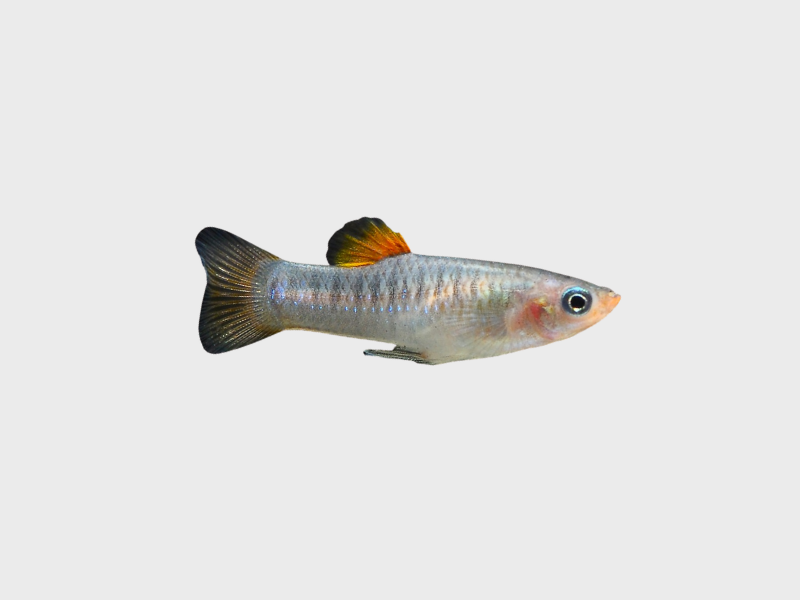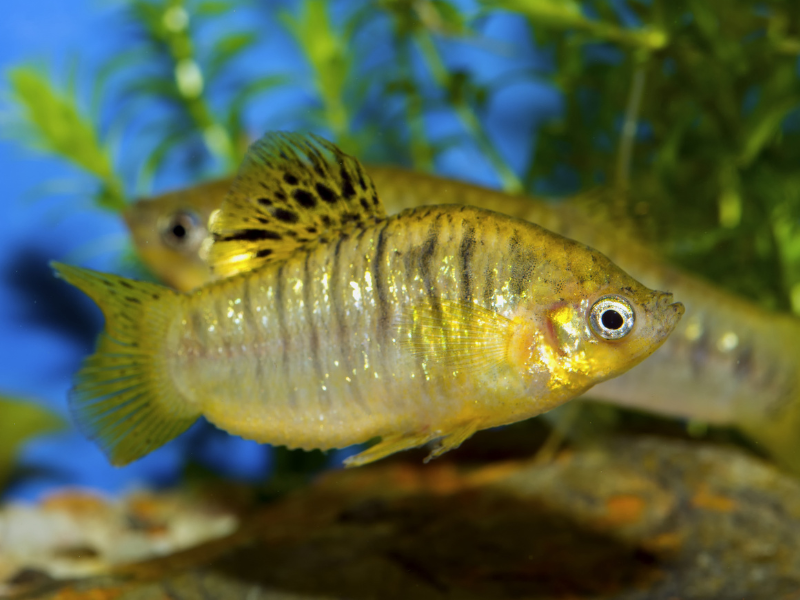Limia tridens
Trident Limia

Scientific Classification
Quick Stats
Aquarium Building Information
About This Species
Basic Description
Detailed Description
The Trident Limia, Limia tridens, is an engaging livebearer endemic to the freshwater systems of Haiti. Its natural habitat consists of waters with a low flow, which should be emulated in an aquarium with gentle filtration to avoid stressing the fish. These environments are characterized by hard, alkaline water, and replicating these conditions is crucial for their long-term health and vitality. A tank for these fish should provide ample open space for swimming, as they are very active and fast swimmers that primarily occupy the middle and top strata of the water column.
As a shoaling species, the Trident Limia must be kept in groups. A solitary individual will become stressed and fail to thrive. In a proper group, they display fascinating social dynamics and are in constant motion, creating a vibrant display. Their energetic behavior means they are best kept with other robust and peaceful fish that are not intimidated by continuous activity. Due to their small adult size, they should not be housed with large or aggressive species that might see them as food.
Their diet in captivity is straightforward. As omnivores, they require a balance of protein and plant-based foods. A high-quality flake or pellet can serve as a staple, but their diet should be supplemented with frozen or live foods like brine shrimp and daphnia. It is also important to provide vegetable matter through blanched vegetables, spirulina-based foods, or by allowing natural biofilm and algae to grow on surfaces, which they will readily graze on. A daily feeding schedule is sufficient to support their medium metabolic rate. Physiologically, they are efficient, with low oxygen consumption and waste production for their activity level, which lessens their impact on the aquarium's bioload. Proper care of this species is particularly meaningful, as its population in the wild is considered vulnerable.
Scientific Description
Limia tridens is a species of live-bearing fish belonging to the family Poeciliidae, a family renowned for its members' reproductive strategy of viviparity. Endemic to Haiti, this species occupies a specific ecological niche within its native freshwater habitats. Its morphology is characterized by a fusiform body shape, which is hydrodynamically efficient and well-suited for its active, fast-swimming behavior in the upper and middle sections of the water column. This streamlined shape minimizes drag, allowing for rapid acceleration and sustained movement with less energy expenditure.
Ecologically, L. tridens functions as an omnivore, contributing to its ecosystem as both a primary and secondary consumer. Its dietary habits, which include the consumption of biofilm, algae, and small invertebrates, position it as a key grazer and micro-predator. This feeding behavior plays a role in controlling algal growth and processing organic detritus, thereby influencing nutrient cycling within its environment. Physiologically, the species exhibits adaptations for survival in hard, alkaline water, with some tolerance for low levels of salinity. Its metabolic profile is notable for a relatively low rate of oxygen consumption and waste production in proportion to its high activity level, suggesting an efficient biological system. This low bioload factor is an advantageous trait in both natural and captive environments.
Of significant importance is the conservation status of Limia tridens, which is classified as Vulnerable by the IUCN. This designation indicates that the species faces a high risk of extinction in the wild due to threats such as habitat loss, environmental degradation, and the impact of invasive species in its limited native range. The maintenance of healthy captive populations by aquarists and conservation organizations can serve as a vital ex-situ safeguard, preserving genetic diversity and acting as a potential resource for future conservation efforts.
Breeding Description
Breeding the Trident Limia is considered relatively easy, as they are prolific livebearers characteristic of the Poeciliidae family. Their reproductive cycle is frequent, and with proper care, a healthy group will propagate readily in a home aquarium. To facilitate successful breeding and maintain social harmony, it is highly recommended to keep a higher ratio of females to males, such as three or more females for every male. This approach helps to distribute the male's persistent courtship attention, preventing any single female from becoming overly stressed.
Distinguishing between sexes is straightforward for those familiar with livebearers. Males are generally smaller, more slender, and possess a gonopodium—a modified, rod-like anal fin used for internal fertilization. Females are larger and have a more rounded, robust body shape, particularly when they are gravid (pregnant). They also have a standard, fan-shaped anal fin.
Following internal fertilization, the female undergoes a gestation period where she nourishes the developing embryos internally before giving birth to live, free-swimming young. The parents exhibit no parental care and will predate their own fry if given the opportunity. To maximize the survival rate of the offspring, several strategies can be employed. The most natural method is to provide a heavily planted aquarium with abundant fine-leaved plants, such as mosses or hornwort, and floating plant cover. This dense vegetation offers numerous hiding places for the newborn fry to escape predation from adults. Alternatively, a gravid female can be moved to a separate, dedicated breeding tank just before she is due to give birth and then returned to the main aquarium afterward, leaving the fry to grow in a safe environment.
The fry are relatively large at birth and are immediately capable of feeding on their own. They can be offered powdered fry food, crushed flakes, newly hatched baby brine shrimp, and microworms. Providing multiple small feedings per day will ensure they receive adequate nutrition for healthy and rapid growth.
Generate Printable Card
Create a printable card for this creature to display in your store or aquarium. The card includes a QR code for quick access to more information.


